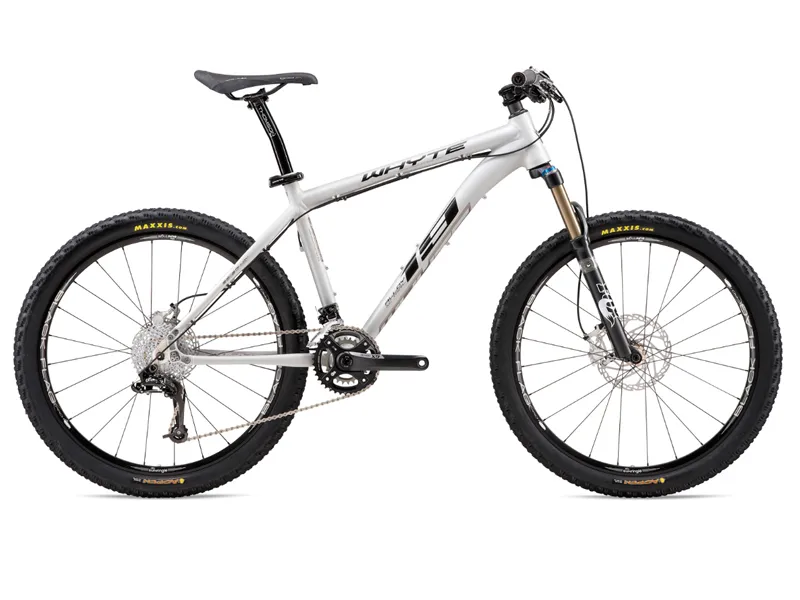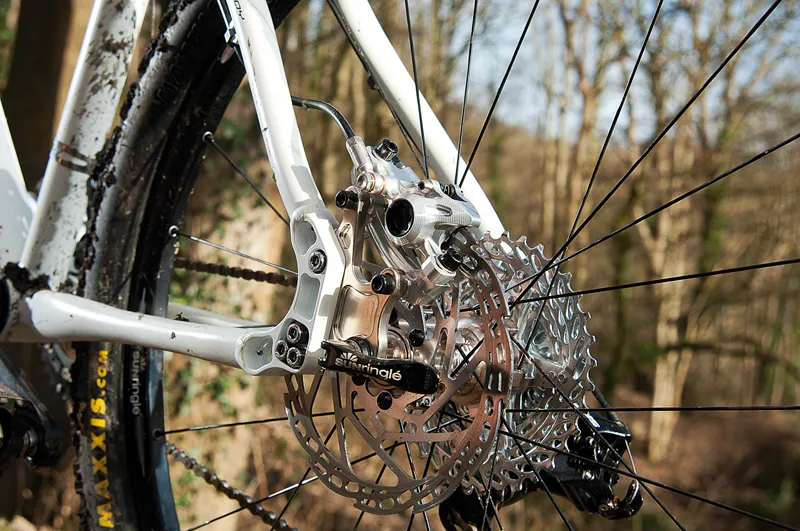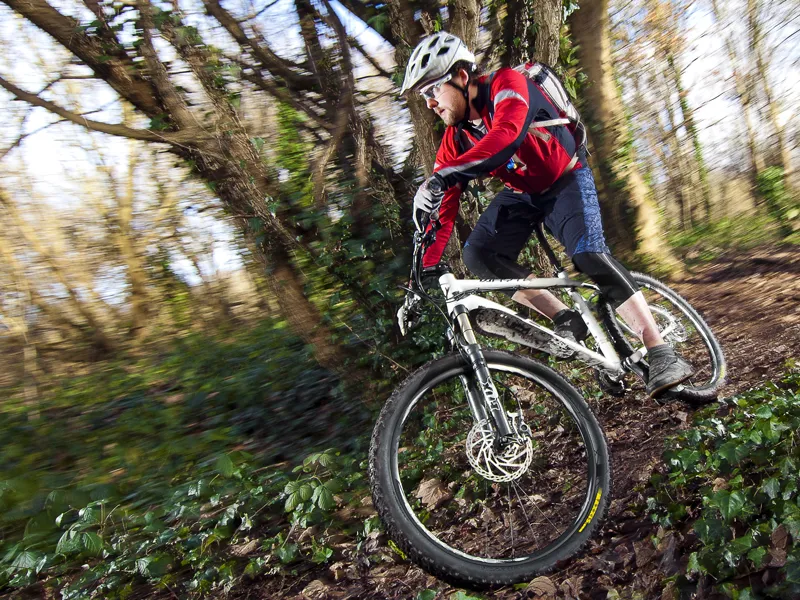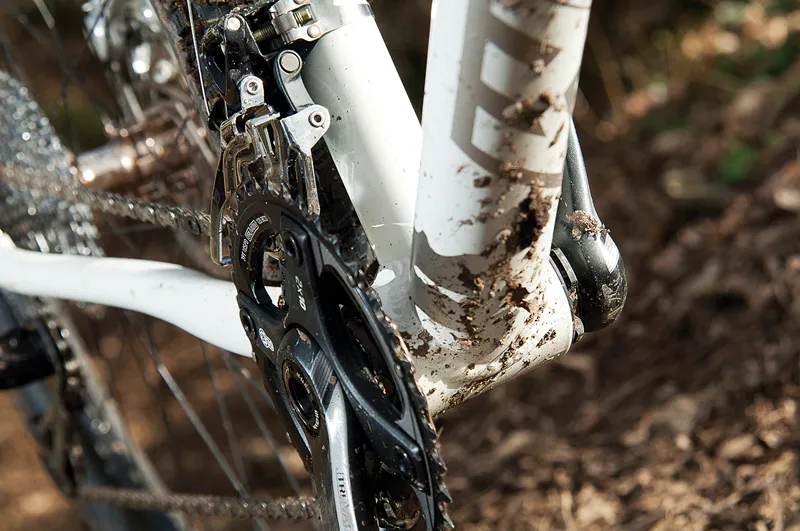The 19 Alloy is the aluminium framed version of the ‘19 triumvirate’ that includes a £1,600 Reynolds 631 steel framed version and a £3,495 titanium version. The alloy bike is the direct descendant of the first 19 from late 2004, which was light, fast, and involving on the trail.
The frame’s been updated but the idea remains the same: to deliver a lightweight yet fully trail capable hardtail that’s versatile and a hoot to ride. The new model embraces all the current trends of tapered head tube, screw-through fork, BB30 bottom bracket and a full 2x10 transmission, but Whyte haven’t overegged the pudding. Instead they've refined an already very good bike still further.
Ride & handling: Offers the best of both worlds – speed and technical capability
On the trail the 19 Alloy feels noticeably slack compared to its predecessor. It’s also a slightly more resilient ride – which is no bad thing as the confident geometry inspires you to push it on the descents. This is something that the original instilled too, however the thinner gauge tubes meant that any rock strikes could put a downtube killing dent into it.
Today’s version better balances the bike’s ride capability with its resilience. It’s a fantastic riding hardtail that devours singletrack and descents. Whether barrelling into compressions or gliding down steep tech sections it never puts a tyre out of place: it’s confident and committed and enjoys nothing but positive superlatives.
The 24in top tube helps produce well balanced handling with enough weight on the front to really work the fork through singletrack. Power delivery through the back end is also outstanding; it’s aided by SRAM’s X9 BB30 crankset and delivers a purposeful climbing response with minimal power loss and instant surge when sprinting.
The shift from a 3x10 transmission to a 2x10 setup (39/26T chainrings with 12-36T rear cluster) was welcome and we never felt we lacked a low enough gear range – whether on our local woodsy test loop or on sizeable hills.
Whyte haven’t rested on their laurels for the new 19, they've continued the evolution and updated the frame and parts list to better reflect the capability of the ride itself. It’s not entirely without flaws, but they’re not significant and can’t detract from that fact that this is a cracking hardtail for having fun out on the trails.
It’s more than happy to tackle all-day epics or fast and hard singletrack sessions. What’s more, it enjoys a twinkle of mischief that ensures this new version maintains the 19’s fine reputation as a classic lightweight yet long-travel trail hardtail.

Frame & equipment: Well-rounded spec package on a slightly tweaked chassis
The well thought out parts list – including Fox’s fantastic F120 RL fork, 685mm-wide Easton EA70 low-riser bar, 180mm front rotor, Sun Ringle Black Flag tubeless-ready wheels shod with 2.25in Maxxis Aspen tyres, and 90mm Thomson stem – equips the 19 with the tools to allow you to go to work on the trail.
The frame is largely the same as that from last year aside from the addition of a tapered head tube, the change to a press-fit BB30 bottom bracket shell, and a slightly lengthened top tube to increase reach. The tapered head tube gets an inset headset to keep the front end low for good climbing manners, and all cabling/hoses are routed under the top tube and feature full cable runs to keep crud at bay.
The down tube is bi-ovalised, flaring towards the head tube junction to maximise the weld area for strength. The head tube junction is smooth welded to deliver a clean look, and the double-pass smooth welding results in the removal of potential stress risers that could lead to cracking along the weld lines, too. The ‘stays are curved to allow good tyre clearances with the 2.25in Maxxis Aspen tyres fitted and the chainstays are flattened slightly.
There are two sets of bottle bosses on the down tube and seat tubes, as well as down-tube-mounted mudguard bosses. Our test bike’s bosses were slightly off-centre on the down tube which meant that when mounted the mudguard was slightly rotated around the tube. For an otherwise classily finished bike that costs nigh on £2,300 this is slightly disappointing.
The listed head and seat angles, and wheelbase and chainstay lengths, move between two extremes because the 19 has one of the smartest non-swappable dropout systems we’ve seen. By rotating around an upper bolt the dropouts can lengthen/shorten the wheelbase (1,111-1,128mm / 43.7-44.4in) and chainstays (415-435mm / 16.3-17.1in) at the same time as slackening/steepening the head and seat angles (67.7-68.2° and 72.2-72.7°).
Want more stability? Lengthen the wheelbase. Want it tight and steeper? Shorten it. It also allows you to run it singlespeed easily and cleanly without the need for a separate chain tensioner. It’s a simple job done with a 5mm Allen key – just bung a bit of Loctite on the bolt threads. Considering that everything else on the 19 is en vogue, it’s odd to see International Standard (IS) mounts used on the 19’s dropouts. They work fine but post mounts would help reduce weight.



